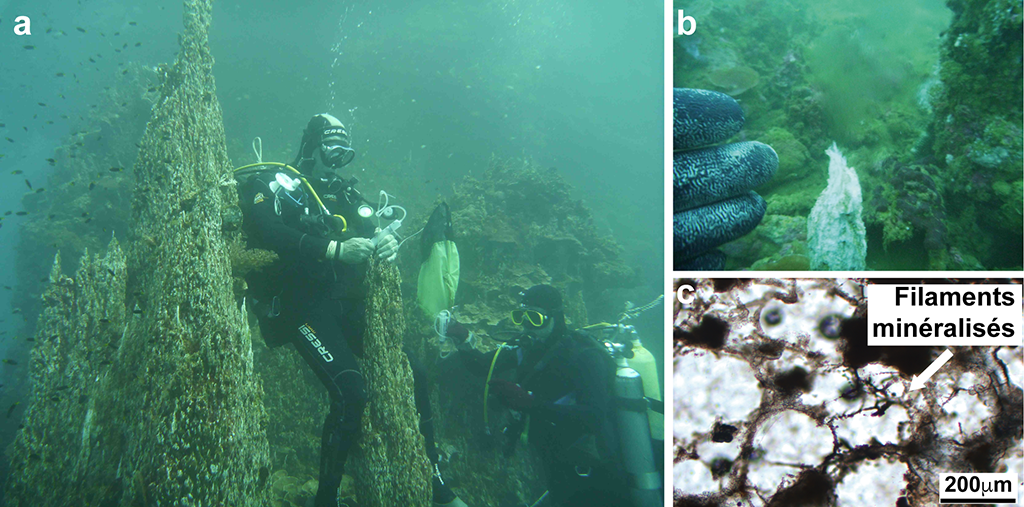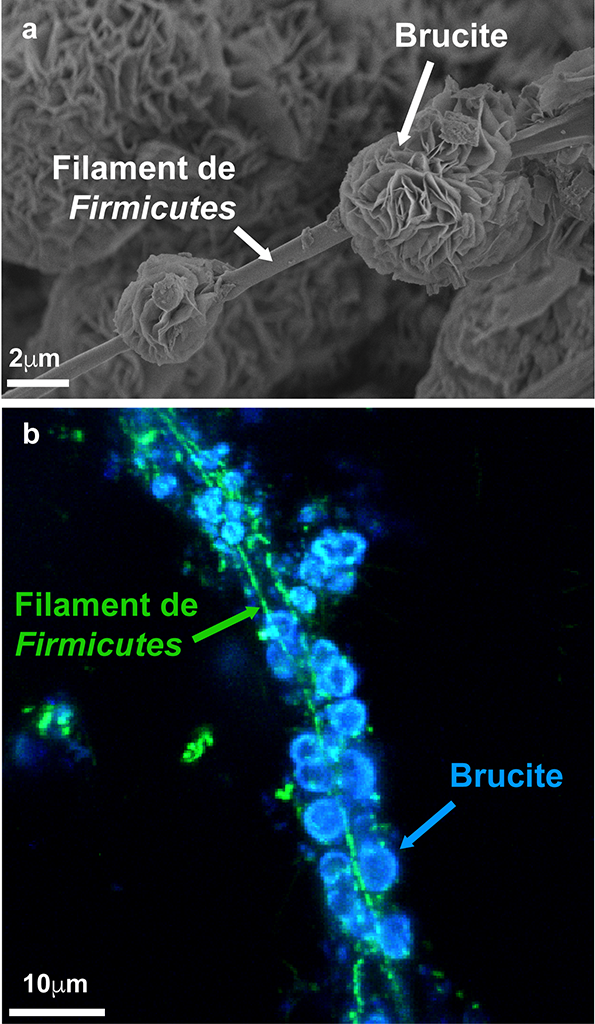What if the first bacteria weren’t the ones we thought?
A growing number of studies tend to show that colonies of bacteria live in the first few hundred meters or even kilometers beneath the surface of the Earth's crust. In these environments beyond the reach of the sun, they draw their energy from chemical reactions between rocks and the fluids circulating within them.

Photograph of an ancient hydrothermal vent in Baie de Prony (New Caledonia).
Publication date: 24/03/2017
Press, Research
Related teams :
Lithosphere Organosphere Microbiosphere (LOMs)
Related themes : Origins








